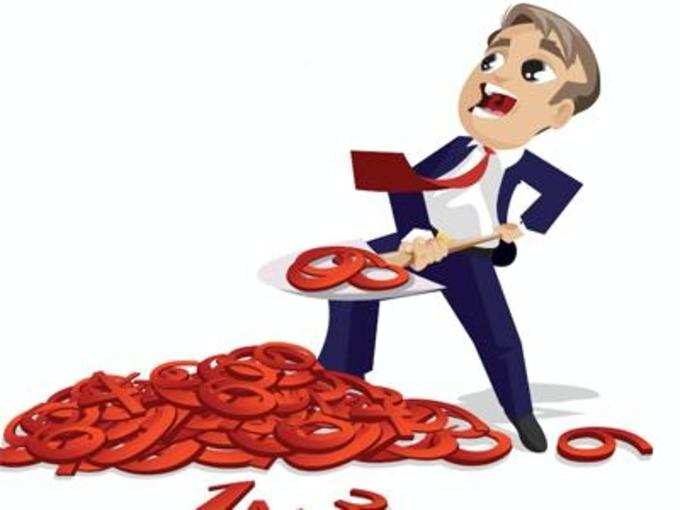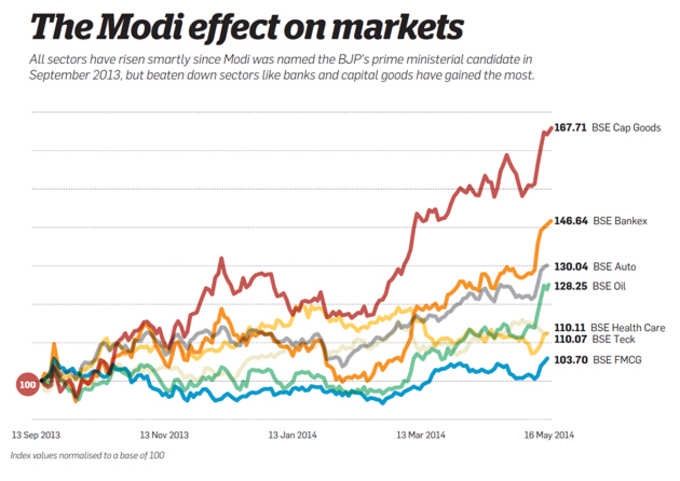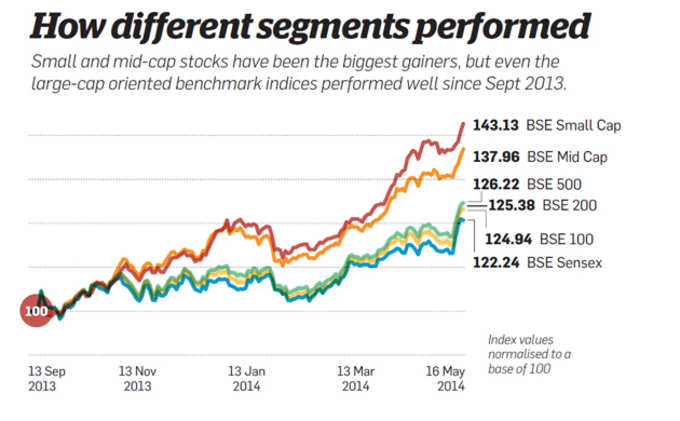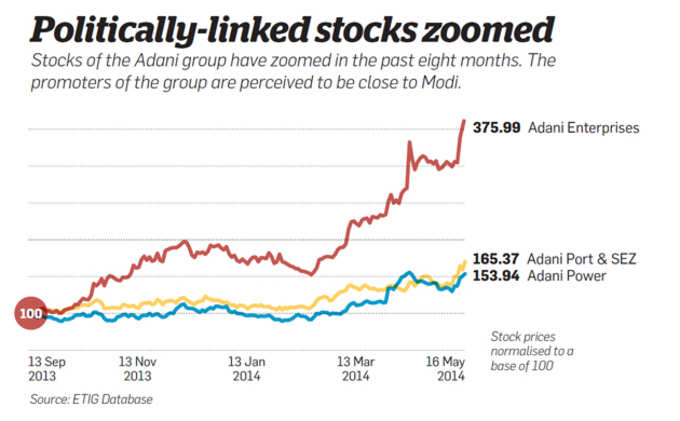 The stock markets have been in a buoyant mood ever since
The stock markets have been in a buoyant mood ever since Now that the markets have safely negotiated possibly the year's biggest event risk,
Cast a fresh eye on your portfolio
Investors with a short-term investment horizon, who have made substantial profits from the current run-up, may encash their gains. "Investors who got in at lower levels should book partial profit and wait for a correction to re-enter," says Vibhav Kapoor, Group CIO, IL&FS. The rationale: the markets have already factored in the positive news and valuations are getting stretched.
Long-term investors, on the other hand, may continue to hold on to their investments. "The overall long-term trend is positive," says Kapoor. Adds Shankar Sharma, vice-chairman and joint managing director, First Global: "India's fundamentals are among the best in the world right now, so hold on to your equity investments." Raamdeo Agrawal, joint managing director, Motilal Oswal
Adds Andrew Holland, CEO-Equities, Ambit Capital: "Foreign investors are very positive, so the high inflows may continue for a few more months." Events like the Union Budget and important economic policy announcements are expected to keep the markets buoyant over the next few months.
 |
Which segment should you bet on?
Should you seek refuge in the relative safety and stability of large-caps, or should you aspire for the higher returns that mid- and small-cap stocks can potentially offer? Remember that these three segments rarely move up in tandem. The large caps led the charge when Narendra Modi was anointed prime ministerial candidate. Only later did the mid- and small-cap counters take over from them. The BSE Mid- and Small-cap indices have gained much more than the Sensex since 13 September. This trend may continue in the future as well. The large-cap stocks are gaining again now, which implies that mid- and small-caps may play catch-up later, once large caps enter correction mode. The mid- and small-cap indices are also quoting at a discount to the large-cap index. However,
 |
Which are tomorrow's sectors?
With the NDA winning a clear mandate, the surge in economy-related stocks may continue. Enter these sectors whenever the markets take a breather. "We continue to like cyclicals," says Holland. One of the new government's top priorities will be to kickstart the investment cycle by expediting clearances. Since the executive wing of the government is likely to work with a sense of urgency, sectors like infrastructure, construction, capital goods and power are expected to fare well.
Another sector expected to benefit from an economic turnaround is financials. But private and public sector banks will go their own separate ways. The former are expected to increase their share of the market pie. Unlike their public-sector peers, they don't have NPA (non-performing assets) related concerns. An economic recovery augurs well for public sector banks as well since it will reduce NPAs throughout the system. While the resolution of NPA-related concerns may take a few quarters, prices of PSU bank stocks may run up much earlier.
The oil and gas sector too is in a sweet spot currently. An appreciating currency will favour this sector by lowering its subsidy burden. Since its low of 68.85 vis-a-vis the dollar on 28 August, 2013, the
Despite global demand improving, the rupee's appreciation could act as a headwind for IT companies in the next few quarters. If sectoral rotation continues and money keeps on moving out of defensives and into cyclicals, there will be added pressure on IT stocks. Avoid this sector for the time being.
Other export-oriented sectors such as textiles and leather may also suffer on account of the rupee strengthening. The domestic slowdown in China may lead to heightened competition from Chinese exports. Import substitution sectors like metals are also in the same boat.
 |
Pharmaceutical, another export-oriented sector, is expected to fare better. While it too will be hit by the currency's appreciation on the external front, the picture in the domestic market is improving. The sector has already put the troubles caused by the drug price control order (DPCO) of 2013 behind it.
Cyclical rotation may hurt some of the defensive stocks in the short term. However, the fundamentals of sectors like auto and
Stocks of a few industrial groups, such as Adani, have done well ever since Narendra Modi became the BJP's prime ministerial candidate. Since momentum still favours these stocks, you may continue to hold on to them for the time being.